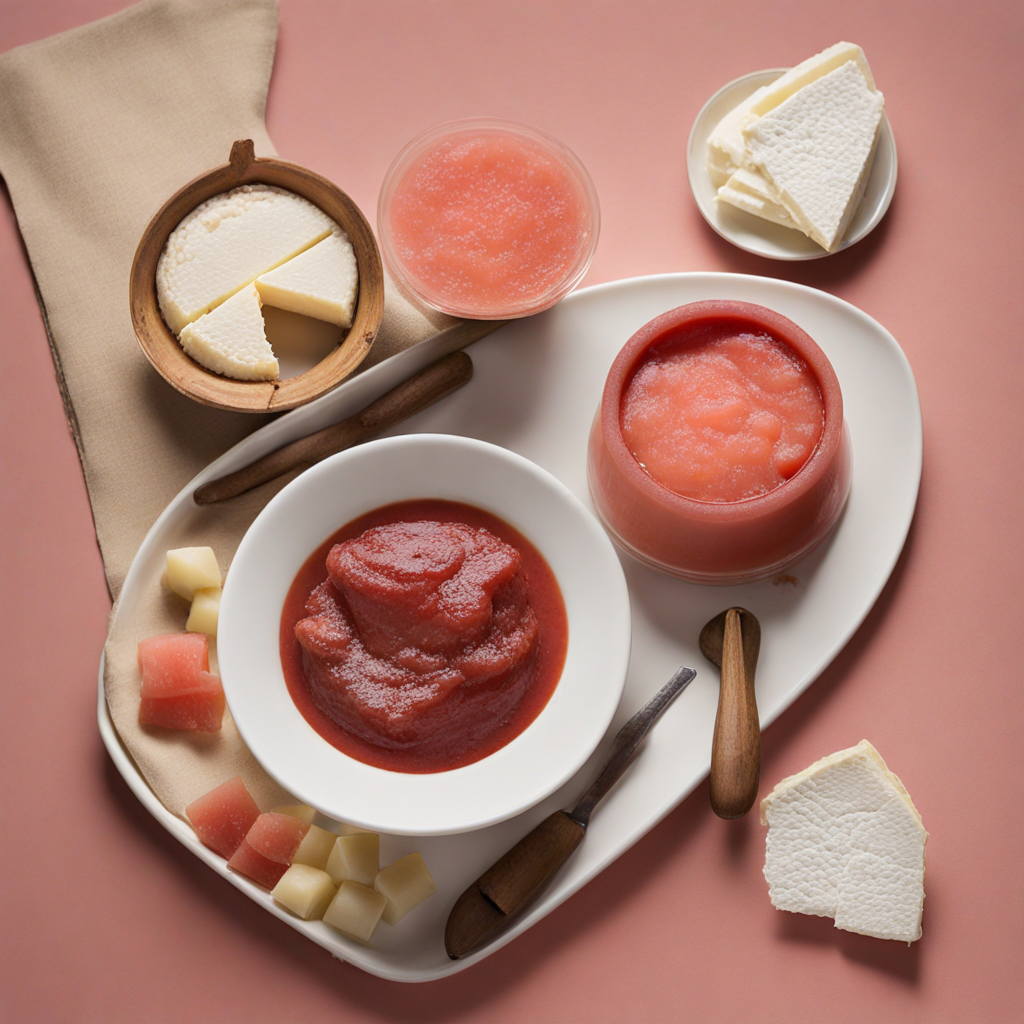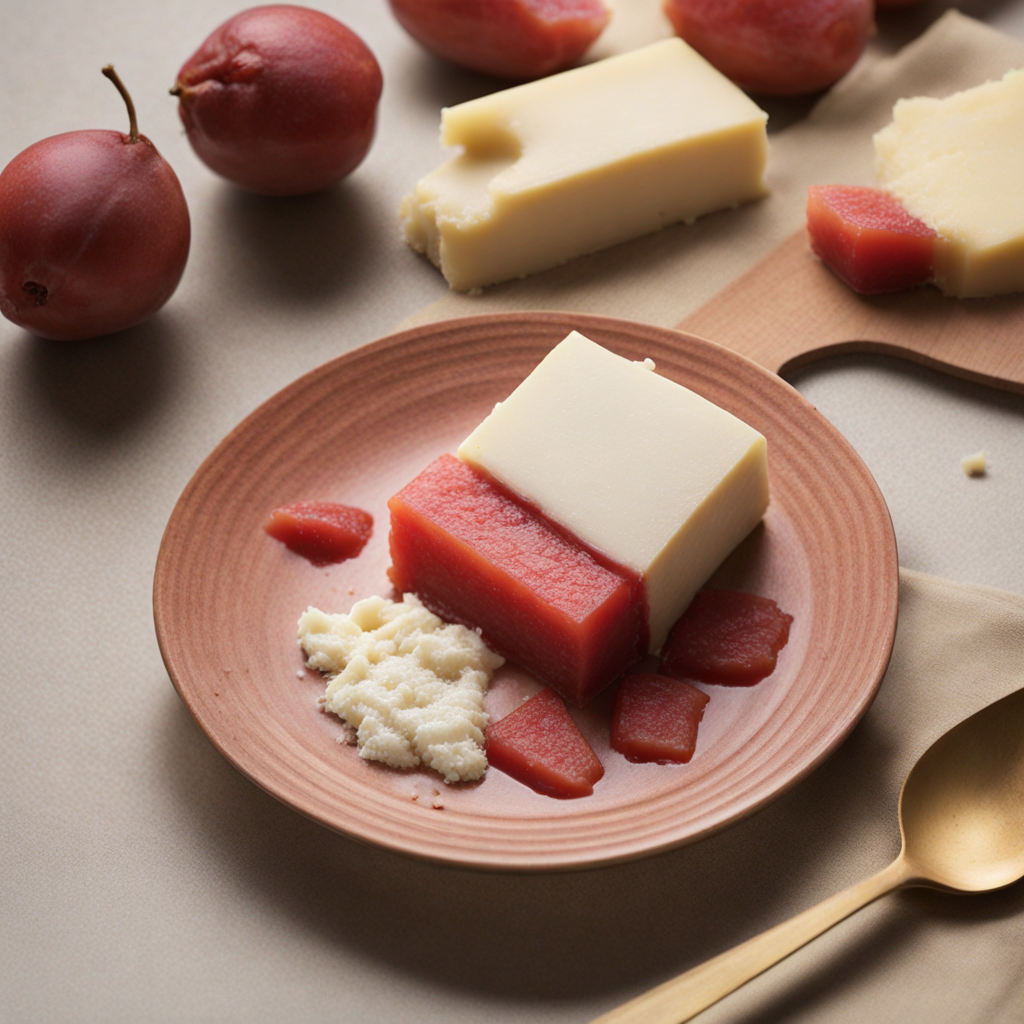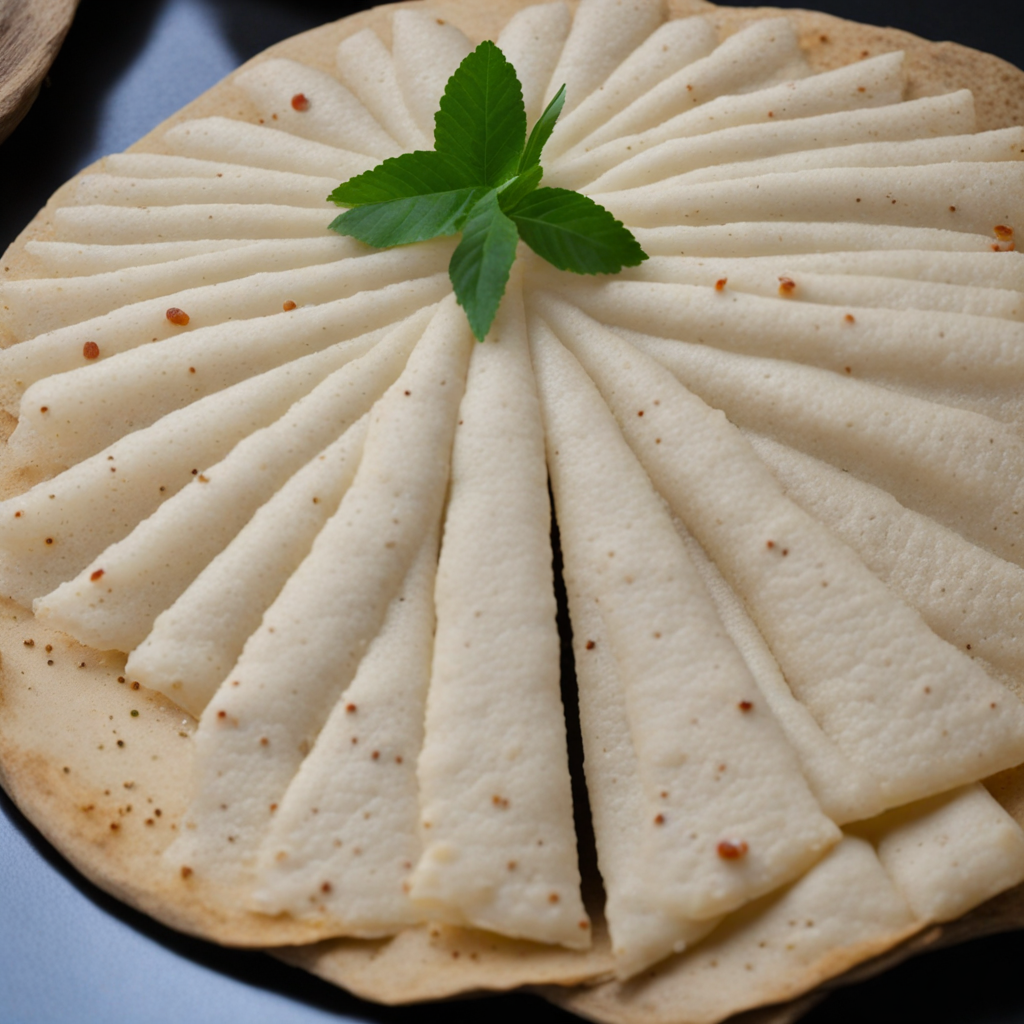Romeu e Julieta
Romeu e Julieta is a delightful Brazilian treat that embodies the perfect balance of sweet and savory. This enchanting dish features a combination of creamy cheese, typically Minas cheese, and guava paste, known as goiabada. The cheese's mild, slightly tangy flavor complements the sweet, fruity notes of the guava, creating a harmonious fusion that tantalizes the taste buds. The simplicity of the ingredients belies the complexity of flavors that come together, making it a beloved snack or dessert throughout Brazil. Traditionally, Romeu e Julieta is enjoyed in various forms, from simple slices served as a snack to more elaborate presentations in desserts. The contrast in textures is also a highlight; the smooth, rich cheese is paired with the thick, sticky guava paste, offering a delightful mouthfeel. Many Brazilians savor it with a cup of coffee or as part of a cheese platter, making it a versatile option for any occasion. Whether enjoyed at a festive gathering or as a quiet indulgence at home, this dish is a true reflection of Brazilian culinary culture. For those looking to explore new flavors, Romeu e Julieta is a must-try. It invites you to experience the essence of Brazil in a single bite, showcasing the country's rich agricultural heritage through its ingredients. The combination of cheese and guava is not only a treat for the palate but also a representation of love and tradition, as the dish's name pays homage to the classic tale of Romeo and Juliet. Discovering this sweet and savory pairing will leave you enchanted and eager for more.
How It Became This Dish
The Sweet Tale of Romeu e Julieta: A Culinary Love Story from Brazil In the rich tapestry of Brazilian cuisine, one dish stands out for its delightful simplicity and profound cultural significance: Romeu e Julieta. This quintessential Brazilian treat, consisting of a creamy cheese paired with a sweet guava paste, has become emblematic of the country's culinary identity. While seemingly humble, the history of Romeu e Julieta intertwines with Brazil’s colonial past, agricultural diversity, and the evolution of Brazilian culinary traditions, reflecting a true love story between flavors. Origins: A Colonial Influence The origins of Romeu e Julieta can be traced back to Brazil's colonial period. The country’s Portuguese colonizers brought with them various food traditions, including cheese-making techniques. The cheese commonly used in Romeu e Julieta is often a fresh, mild cheese, similar to Minas cheese (queijo Minas), which hails from the state of Minas Gerais. This cheese, made from cow’s milk, has its roots in the Portuguese queijo, but over time it adapted to Brazilian climates, practices, and tastes. On the other hand, guava – the other half of this culinary duo – is a fruit native to tropical America. The guava tree was cultivated by indigenous peoples long before the arrival of Europeans, but it gained prominence in Brazil as Portuguese settlers began to experiment with local fruits. The sweet guava paste, or goiabada, became a staple in Brazilian households, especially in the 18th century, as sugarcane plantations flourished. The combination of a fresh cheese and a sweet fruit paste was likely a product of necessity, utilizing locally available ingredients that complemented each other beautifully. Cultural Significance The name "Romeu e Julieta" itself is a nod to the famous Shakespearean tragedy, reflecting a romantic notion of love that transcends boundaries. In Brazilian culture, this pairing symbolizes the duality of life and the harmony found in contrasts. The creamy, slightly tangy cheese represents the challenges and complexities of life, while the sweet, vibrant guava paste embodies joy and simplicity. Together, they create a balance that resonates with the Brazilian ethos of embracing life’s dichotomies. Romeu e Julieta is not just a dish; it is a cultural phenomenon. It is commonly enjoyed as a dessert, a snack, or even as part of a breakfast spread. It is often served at family gatherings, festive celebrations, and even as a comfort food during quieter moments. The dish transcends social classes and regional boundaries, uniting Brazilians from different walks of life through its shared flavors and nostalgic memories. Development Over Time As Brazil evolved through the 19th and 20th centuries, so did the culinary landscape. The industrialization of food production and the rise of urban centers led to new interpretations and variations of traditional dishes. Romeu e Julieta remained steadfast in its popularity, but urbanization brought about changes in how it was consumed. Pre-packaged guava paste and cheese became widely available, making it easier for busy city dwellers to enjoy this classic combination. In the 21st century, a renewed interest in artisanal and locally-sourced foods has revitalized Romeu e Julieta. Chefs and home cooks alike have begun to explore gourmet variations of the dish, using artisanal cheeses and homemade guava paste. Some have even experimented with adding spices, herbs, or other fruit pastes to create innovative new takes on this beloved classic. The dish has found its way onto the menus of high-end restaurants, where chefs pay homage to its traditional roots while also elevating it to new culinary heights. Moreover, Romeu e Julieta has become a symbol of Brazilian identity on the global stage. As Brazilian cuisine gains recognition and appreciation worldwide, this simple yet profound dish is often highlighted as an example of the country’s rich gastronomic heritage. Cooking shows, food festivals, and cultural events around the world have introduced Romeu e Julieta to international audiences, encouraging a deeper understanding of Brazil’s diverse culinary landscape. Modern Interpretations and Global Influence In recent years, the accessibility of global culinary influences has led to creative adaptations of Romeu e Julieta. Chefs are experimenting with elements from various cuisines, creating fusion dishes that incorporate flavors from around the world. For example, some have introduced spices like cinnamon or cardamom into the guava paste, while others have paired it with different types of cheese, such as blue cheese or brie, showcasing the dish's versatility. Additionally, Romeu e Julieta has found its way into the realm of desserts beyond its traditional presentation. Chefs have crafted Romeu e Julieta-flavored ice creams, pastries, and even cocktails, further embedding this iconic pairing into contemporary Brazilian cuisine. Social media has played a significant role in popularizing these innovations, with food enthusiasts sharing their own takes on the dish and celebrating its cultural significance. Conclusion: A Culinary Love Story Romeu e Julieta is more than just a simple cheese and guava paste pairing; it is a representation of Brazil’s complex history, cultural richness, and the unbreakable bond between tradition and innovation. Its evolution mirrors the journey of Brazilian cuisine itself, from colonial roots to contemporary interpretations, showcasing a love story that transcends time, tastes, and borders. As Brazil continues to embrace its culinary heritage while looking toward the future, dishes like Romeu e Julieta remind us of the beauty of simplicity and the power of flavors to connect people. In every bite of this delightful combination, one can taste the history, culture, and love that have shaped Brazil’s gastronomic landscape, making Romeu e Julieta an enduring symbol of Brazilian identity on the world stage.
You may like
Discover local flavors from Brazil







